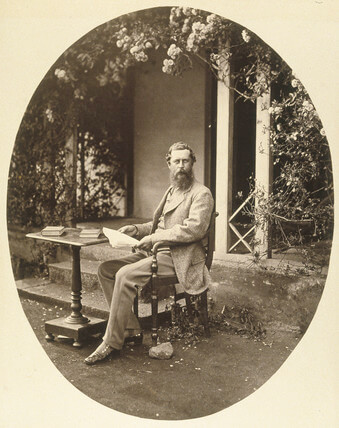Samuel Bourne, an English photographer born in 1834, is celebrated as one of the foremost figures in early Indian photography. His journey into the world of photography began in Nottingham, England, where he initially worked as a bank clerk. However, his passion for the burgeoning art of photography soon eclipsed his banking career, leading him to pursue it full-time. Bourne's meticulous attention to detail and his technical proficiency quickly set him apart in the photographic community.
In 1863, Bourne embarked on an ambitious voyage to India, a decision that would define his career and cement his legacy. He arrived in Calcutta (now Kolkata) and joined forces with the established photographic studio Howard & Shepherd, which later became known as Bourne & Shepherd. This partnership allowed Bourne to explore the Indian subcontinent extensively, capturing its diverse landscapes, architecture, and people with an unprecedented level of precision and artistry.
Bourne's expeditions were both challenging and groundbreaking. He undertook several arduous journeys to remote and often inaccessible regions of India, including the Himalayas, where he captured stunning photographs of the mountains, rivers, and valleys. His images of Kashmir, Simla (now Shimla), and Darjeeling are particularly renowned for their clarity and composition. Bourne's work required immense physical stamina and technical skill, as he often had to transport heavy photographic equipment through difficult terrains.
Throughout his time in India, Bourne produced an extensive portfolio that vividly documented the subcontinent's natural beauty and architectural grandeur. His photographs provided a window into India for the Western world and were widely acclaimed for their artistic merit and documentary value. Bourne's work was regularly featured in British photographic journals, and he received numerous accolades for his contributions to the field.
Samuel Bourne returned to England in 1870, leaving behind a lasting legacy in the world of photography. He continued to be involved in the photographic industry but never again embarked on such extensive travels. Bourne's Indian photographs remain a significant historical record, offering a glimpse into the 19th-century Indian landscape and culture. His pioneering efforts not only advanced the technical aspects of photography but also set a high standard for future generations of photographers. Samuel Bourne passed away in 1912, but his work continues to be celebrated for its artistic and historical importance.
